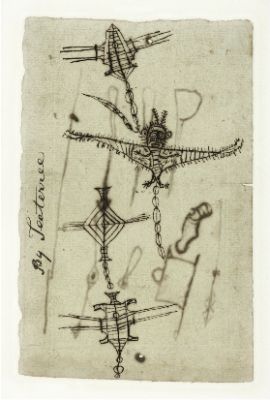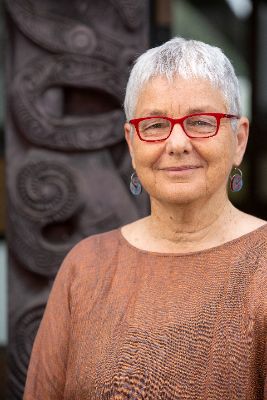Matariki Exhibition And Talk At Pompallier Mission Celebrates Earliest Māori Writing And Drawing

An exhibition of some earliest known examples of Māori engagement with writing and drawing on paper from 1793 to 1835 will take place at Pompallier Mission and Printery in Kororāreka / Russell (from June 24).
The special Matariki exhibition will be supported by a talk by Alison Jones which will also take place at Pompallier Mission and Printery (June 26, 11am).
Alison Jones is a professor at Te Puna Wānanga School of Māori and Indigenous Education at Waipapa Taumata Rau | The University of Auckland. She is a Pākehā who works and writes in the field of Māori-Pākehā relationships.
Alison is author of several books including This Pākehā Life: An Unsettled Memoir, shortlisted for an Ockham New Zealand book award. She is also co-author of the award-winning book He Kōrero: Words Between Us – First Māori-Pākehā conversations on paper, and will talk about the earliest Māori engagement with writing
This early engagement of Māori with the written word and literacy had a flow on effect to the history of Pompallier Mission and printery with the famous Gaveaux press printing nearly 40,000 books in te reo Māori from 1841 to 1850 in Kororāreka.

Come and learn about:
- the 1814 letter to hapū in the Bay of Islands negotiating the conditions of the first Pākehā settlement
- the establishment by local Māori of the first school in New Zealand, in 1816
- the unique letters sent in 1818 from England by a young Ngare Raumati man from Pāroa Bay about the Industrial Revolution he was witnessing
- the first letter ever independently written in Māori, addressing ‘te tini rangatira o Ropi’ [‘the many chiefs of Europe’], by a ten-year-old boy named Hongi in 1825
This event was organised in close collaboration with the Kororāreka Marae komiti.
Matariki is an auspicious time for Alison to share her kōrero according to Delphine.
“Pompallier Mission celebrates Te tau hou Māori (Māori new year) - the peaceful and inspiring encounters of cultures, languages and spiritualities which took place here in the past,” she says.
“This year is particularly significant as Matariki will be collectively celebrated for the first time as a public holiday in Aotearoa. It is a time for us to get together as community, as whānau, contemplate the cycle of life and death, remember our tūpūna (ancestors), share knowledge and sustenance together.
“Matariki enables us to reflect on the past and sew seeds of peace and understanding for the future,” she says.
“The exhibition and Alison’s kōrero fits very well with this kaupapa.”
Free entry to the exhibition and talk on Sunday June 26.


 Pure Adventure Charitable Trust: Iconic One New Zealand GODZONE To Make Triumphant Return To New Zealand’s Adventure Racing Scene
Pure Adventure Charitable Trust: Iconic One New Zealand GODZONE To Make Triumphant Return To New Zealand’s Adventure Racing Scene The Charter School Agency: New Charter Schools Open Doors To First Students
The Charter School Agency: New Charter Schools Open Doors To First Students  The Wednesday Challenge: Tauranga Travel Initiative Goes National
The Wednesday Challenge: Tauranga Travel Initiative Goes National Love Grace Handbag Appeal: How Kiwis United to Collect 5,269 Handbags in Grace Millane's Memory
Love Grace Handbag Appeal: How Kiwis United to Collect 5,269 Handbags in Grace Millane's Memory Sharon McLennan, The Conversation: Fiji’s HIV crisis is a regional challenge that demands a regional response
Sharon McLennan, The Conversation: Fiji’s HIV crisis is a regional challenge that demands a regional response Waitangi Treaty Grounds: New Exhibition At Te Kōngahu Museum Of Waitangi: He Kura Toi Tangata - 50 Years Of The Waitangi Tribunal, 1975-2025
Waitangi Treaty Grounds: New Exhibition At Te Kōngahu Museum Of Waitangi: He Kura Toi Tangata - 50 Years Of The Waitangi Tribunal, 1975-2025